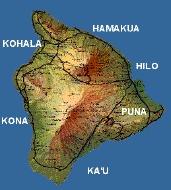The standard Hawaii Information Service Purchase Contract used on the Big Island of Hawaii and Kauai has provisions for various inspections including your personal inspection, a professional Home Inspection, a separate Termite Inspection and a survey. The question always is, “who pays for these inspections?” While everything is negotiable, there are certain norms that everyone has come to except.
SURVEY. Let me start with the survey. Only residences and raw land are surveyed; condos don’t require a survey. There are two ways to go about surveying a Hawaiian property you are purchasing. First is a full survey. In cases where there is a house on the property, houses on the lots next door, and the properties are surrounded by fences or rock walls, you will want a full survey. The full survey will plot the position of the house on the lot, delineate the setback lines and map the location of fences and rock walls. The Survey Report will state if there are any encroachments along the property lines or within the setbacks. Setbacks are imaginary lines, set back from the property lines a certain number of feet, created by County Ordinance, wherein no structures are supposed to intrude (encroach). Generally it is accepted that the seller will pay for this survey. The second type of survey is called “staking”. With a staking, the surveyor only marks the location of the property’s boundary pins. Usually with raw land, a staking is all that is necessary. The seller usually pays for the staking. If there are rock walls and fences, and the buyer wants a full survey, then who pays is a matter of negotiation. If a seller refuses to pay for all or a portion of a survey or staking, and the buyer is willing to cover the cost, I always suggest that the seller pay up front, and the buyer agree to credit the cost to the seller out of escrow at closing. That way, if the escrow fails to close, the buyer hasn’t paid for a survey he can’t use and the seller now has a survey for the next buyer.
HOME INSPECTION. The Big Island Purchase Contract allows the buyer unlimited inspections over an agreed upon period of time; usually 15 days (negotiable). The buyer can inspect themselves and/or pay for any professional inspection they choose. Property inspection companies have sprung up all over the country to fill this need. There are dozens of them on the Big Island. The buyer chooses the inspection company and pays for the home inspection. If the inspection turns up something serious enough to cause the buyer to want to cancel escrow, they can do so without cause during the inspection period and get their deposit back. However, the home inspector has to be paid by the buyer whether they decide do purchase the property or not.
TERMITE INSPECTION. Of course everything is negotiable, but the Purchase Contract calls for the seller to pay for the termite inspection and treatment if needed. However, the buyer can choose the company they want to do the inspection. If treatment is required by the Inspection Report, the seller can choose the company to the work. The seller is also expected to pay for any treatment whether it be spot treatment or a full tenting. If the seller should refuse, then it becomes a matter of negotiation. Treatment is only required if live infestations are discovered. In Hawaii, the seller is under no obligation to repair any termite damage that may be discovered.
ESCROW FEES. The method by which the escrow fees are divided are posted at the top of page 4 of the Hawaii Association of Realtors Purchase Contract. Charged to the Buyer (if applicable) are 40% of the title insurance premium, cost of drafting the note and mortgage, cost of obtaining buyer’s consents, Buyer’s notary fees, 50% of the escrow companies fee, condominium or subdivision fees charged by AOAO (Association Of Apartment Owners) or HOA (Home Owner’s Association) to transfer their paperwork from the seller to the buyer. Charged to the Seller (if applicable) are 60% of the title insurance premium, cost of drafting conveyance documents, cost of obtaining seller’s consents, 50% of the escrow fee, seller’s notary fees, cost of required staking or survey, recording fees to clear seller’s title, conveyance taxes and Federal and/or State withholding for any capital gains that may be owed. Yes, you read that right, the seller pays for 60% of the cost of the buyer’s title insurance.
